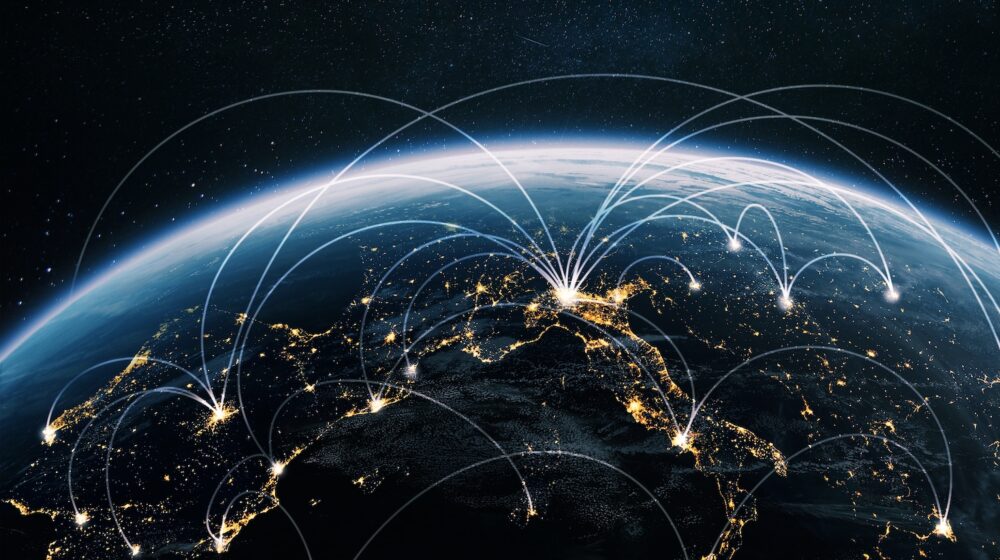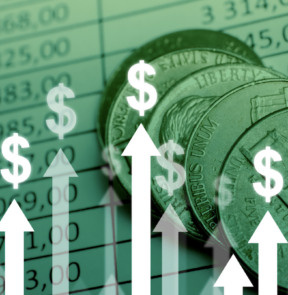For most of our lifetimes, economies around the world have been moving generally in one direction — toward greater interconnectedness. Advances in transportation and technology and the precipitous decline in tariffs since the end of World War II have allowed for the greater movement of raw materials and finished products around the world.1 Meanwhile, companies in the developed world have rushed to gain access to cheaper sources of labor in emerging economies that weren’t accessible until the end of the Cold War. The result: After making up less than 10% of gross domestic product in the 1950s and 60s, trade has grown to nearly 30% of the U.S. economy, according to the World Bank.2
But two crises and a seismic change in the political climate have begun to reverse this trend, potentially with meaningful implications for global economies as well as individual investment strategies.
From ‘Slowbalization’ to Deglobalization
The first blow to globalization came in the aftermath of the Global Financial Crisis, when international trade slowed considerably for the first time since World War II amid a worldwide recession—a period that came to be known as ‘slowbalization.’3 Roughly a decade later, coordinated worldwide economic shutdowns caused by the Covid pandemic led to another recession that hammered the service and retail economy while exposing the vulnerabilities of relying too heavily on global supply chains.
These back-to-back crises spurred two sustained trends: First, businesses around the world have begun to reshore and localize key parts of their supply networks. Part of the motivation, at least initially, was to address rising shipping and labor costs in the immediate aftermath of the global pandemic.4 Of course, in the long run shifting manufacturing from lower-wage economies back to higher-wage markets raises the risk of rising prices going forward.5
At the same time, the economic pain and anxieties brought about by the last two recessions contributed to a wave of populism around the world, as trade policies, global financial institutions, and multi-national corporations were blamed, in part, for their role in those downturns, weakening support for open trade.6 Overseas, this shift toward economic nationalism has been seen in moves ranging from ‘Brexit,” the U.K.’s exit from the European Union, to France’s recent push to impose legal protections for farmers against large, multinational supermarket operators.7
Here at home, the Trump Administration started raising tariffs on China and other trade partners on goods such as imported steel and aluminum beginning in 2018.8 The Biden Administration left many of those tariffs in place and recently moved to impose another layer of tariffs to protect domestic businesses including the auto, biopharmaceutical, and tech industries. Regardless of which party wins the White House in November, both parties appear to be increasingly supportive of protecting U.S. industries.9
What This Means for the Economy
Jobs Outlook: Policymakers have been pushing to re-shore key manufacturing capabilities, led by technology-related jobs. For example, the U.S. CHIPS and Science Act, passed in 2022, seeks to ensure U.S. capabilities in key semiconductor chips to prevent Chinese manufacturers from controlling that essential product. But this is likely to be a slow process, as companies must first build out the manufacturing infrastructure necessary to reshore major industries while addressing the availability of skilled workers and navigating tougher environmental regulations at home. By some estimates, it could take more than 30 years to reach the Biden Administration’s goal of reshoring 5 million manufacturing positions.10
Moreover, the employment impact of deglobalization isn’t that clear cut. The same economic nationalism that is driving U.S companies to reshore jobs is motivating foreign employers to do the same. Foreign direct investments in the United States accounts for nearly 16 million jobs, or roughly 10% of total U.S. employment.11 While the U.S. remains the top destination for foreign direct investments, FDI in the U.S. has slowed in recent years, which is being felt in greenfield investments that in recent decades has been an important source of job creation. Last year, foreign direct investments fell to $289 billion, down from $403 billion in 2021 and $480 billion in 2016.12
Inflation: The era of globalization that accelerated in the 1990s, with global trade policies such as the North American Free Trade Agreement (NAFTA), coincided with the “Great Moderation,” as access to cheaper labor and raw materials helped drive down prices worldwide and led to prolonged period of price stability, contributing to two decades of disinflation.
While there’s great debate among economists as to how big a role globalization played in taming inflation, there has been a historical correlation between globalization and disinflation, according to the International Monetary Fund. This goes back to the first era of globalization in the mid 19th century when the advent of locomotives and steamships slashed the transportation costs of global trade, which corresponded with slowing consumer price growth that lasted until World War I.13 During the most recent era of globalization, the annual inflation rate in the U.S. fell from 5.4% in 1990 down to 1.2% in 2020.
But with rising wage pressures and the potential for new tariffs on imported goods, the question is: Will inflation return to the 1%-3% band seen between 2010 and 2020, or will it settle at a higher range as the impact of a structural change in the labor market and de-globalization are felt? The answer to that question may lie with consumers, who gained unprecedented access to low-cost goods in past years. Will the economic nationalism driving deglobalization sway consumers to pay more for domestic production?
What This Means for Investors
Figuring out the winners and losers of deglobalization will be a complicated process that may require revisiting one’s portfolio, sector by sector, throughout the coming decade. Investors must also cope with the likelihood that trade policies both here and abroad are likely to change in the coming years, especially after this year’s global election cycle which could bring in new leaders in North America, Europe, Asia, and Latin America.
At the very least, rising wage pressure and costs for raw materials is likely to weigh on corporate profit growth at a time when higher interest expenses are already having a negative effect on earnings. The combination of higher rates and higher costs could hold down multiples investors are willing to pay for stocks.
Having a trusted advisor can help you understand the potential implications of deglobalization and other economic forces and their impact on your investment portfolio. If you would like to discuss how Fiduciary Trust Company can help you achieve your financial and personal goals, please reach out to Sid Queler at squeler@fiduciary-trust.com.



